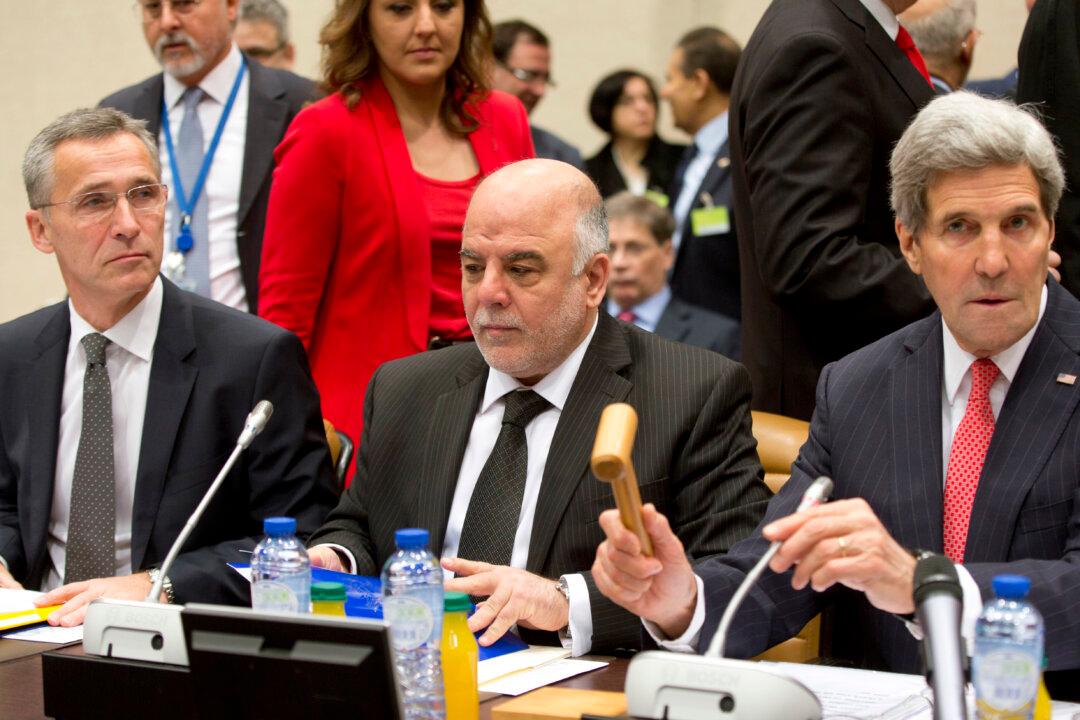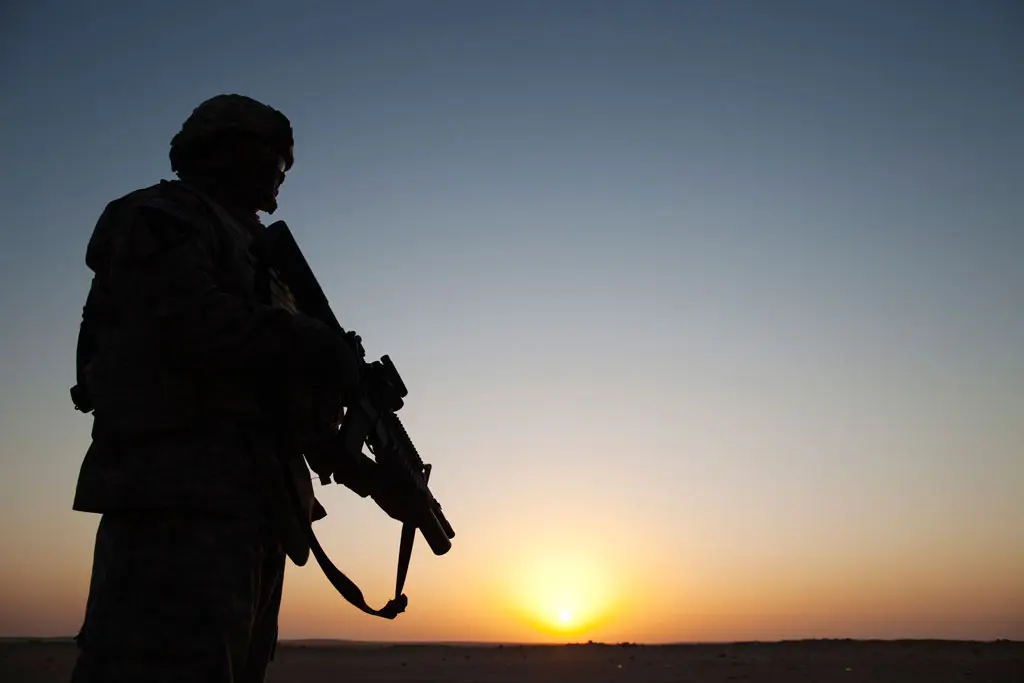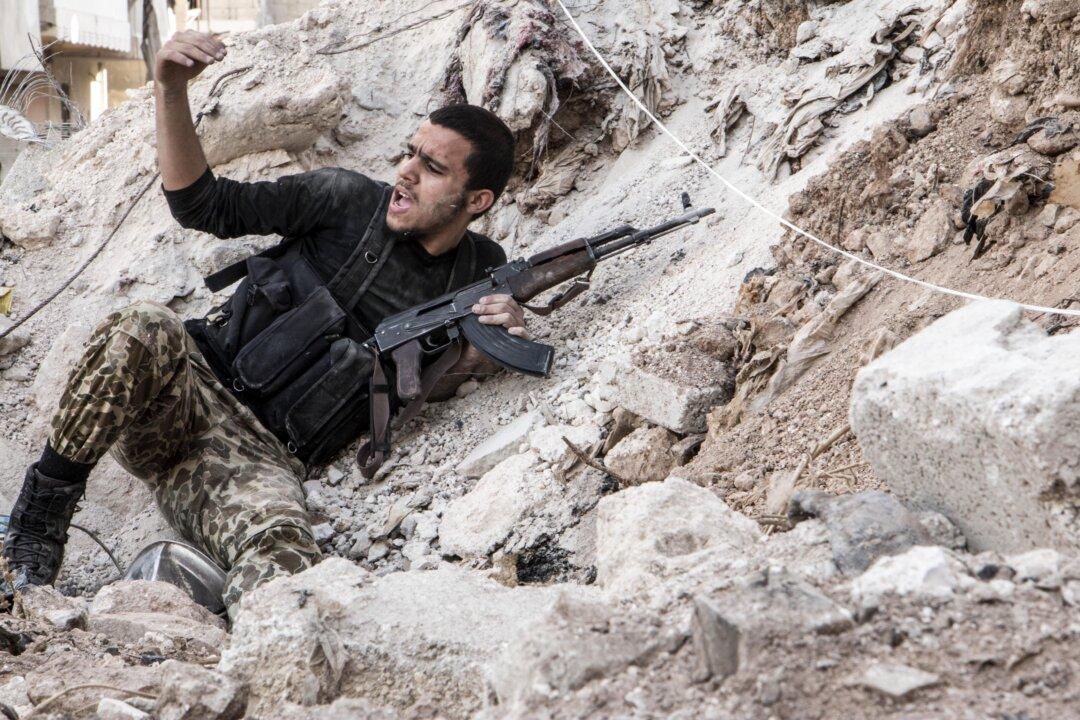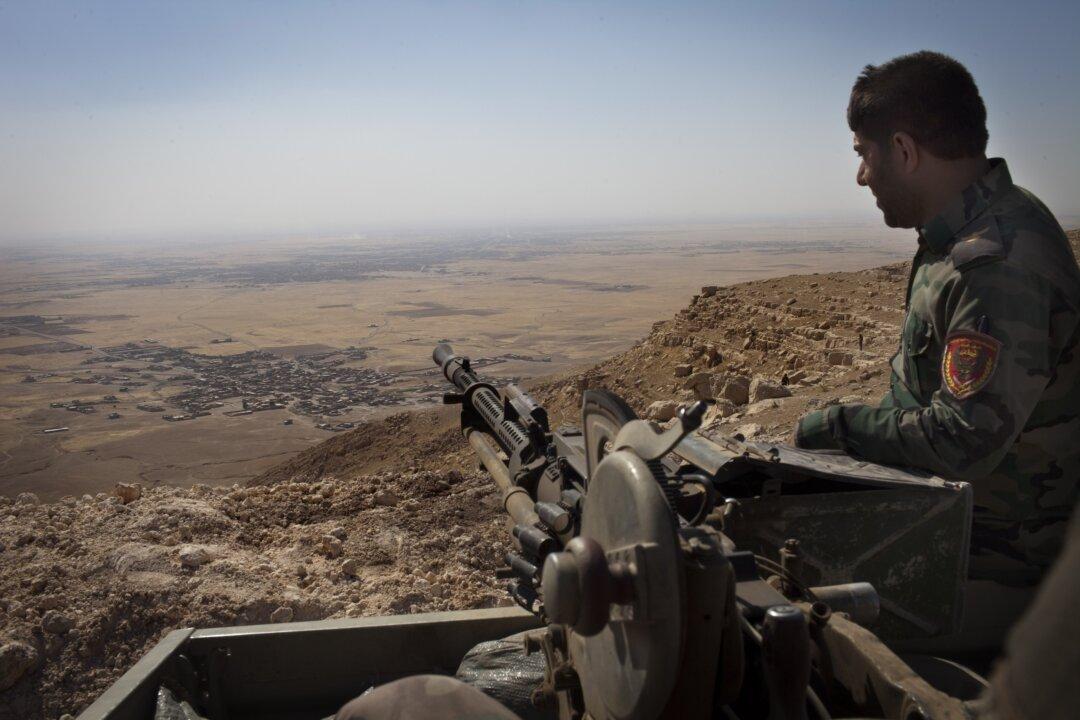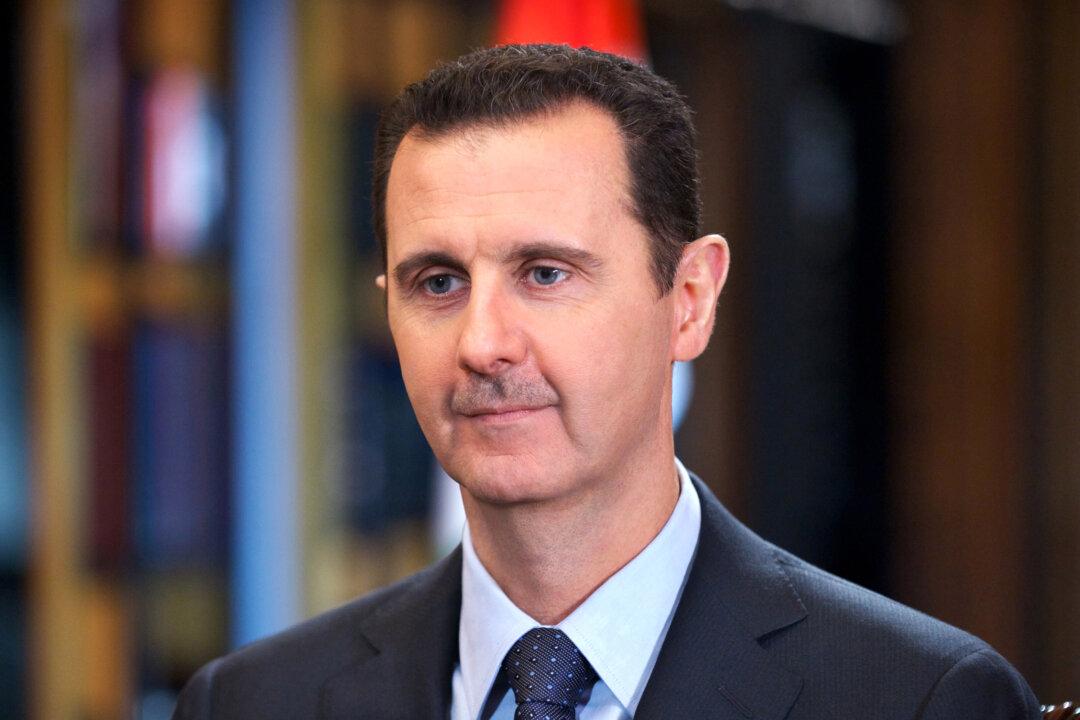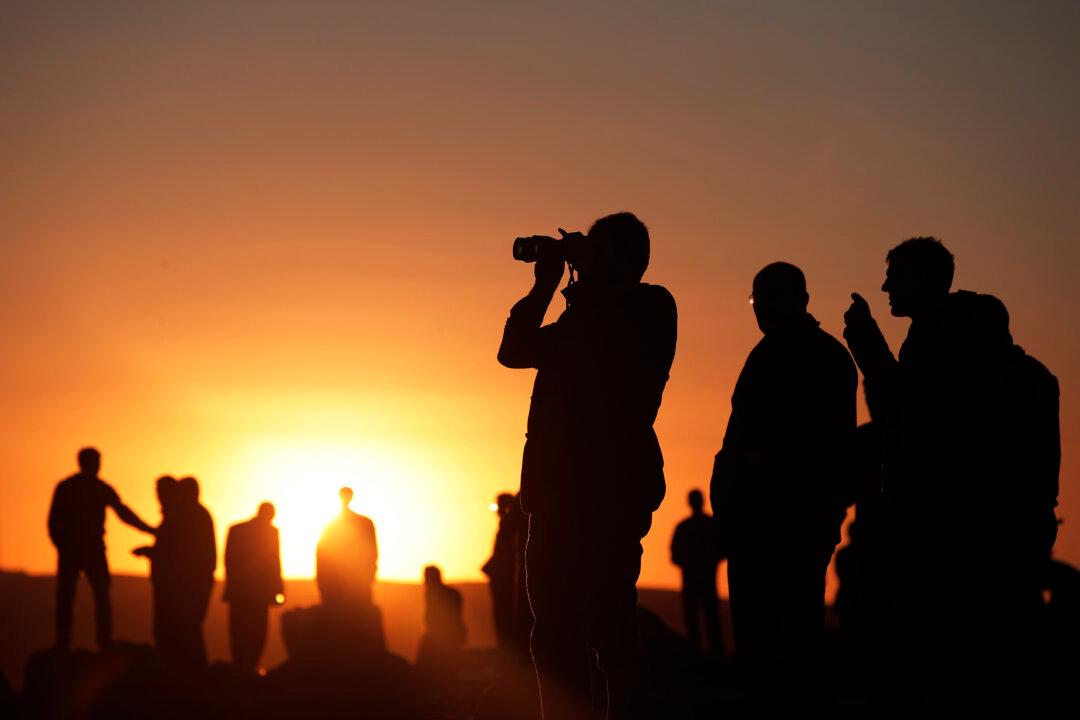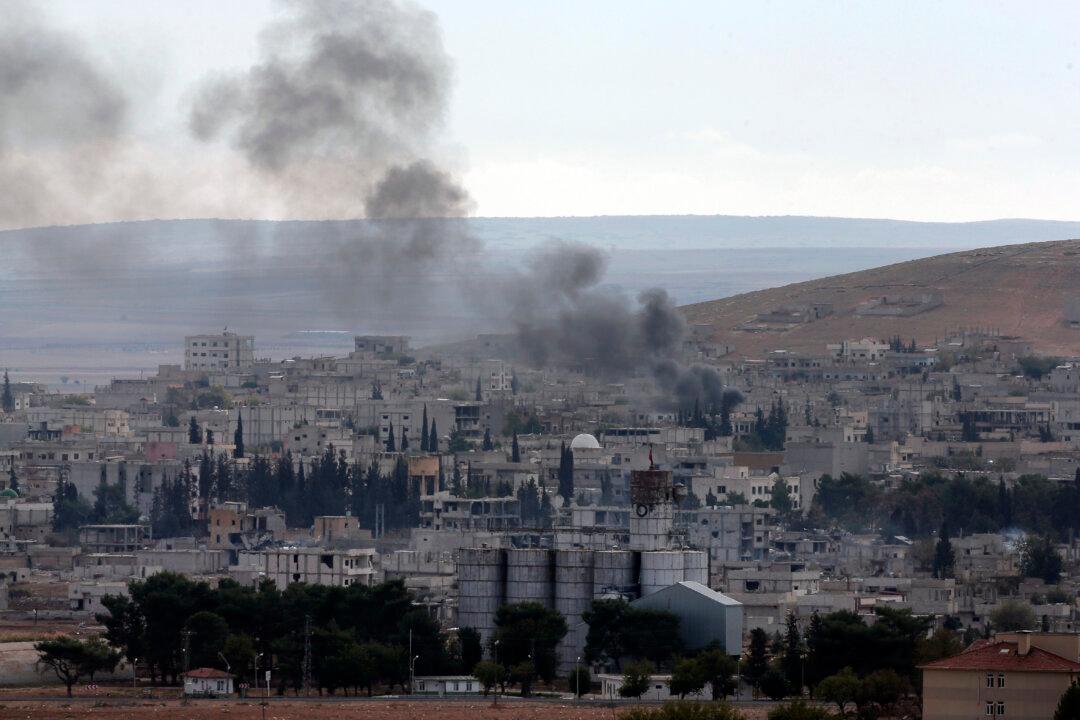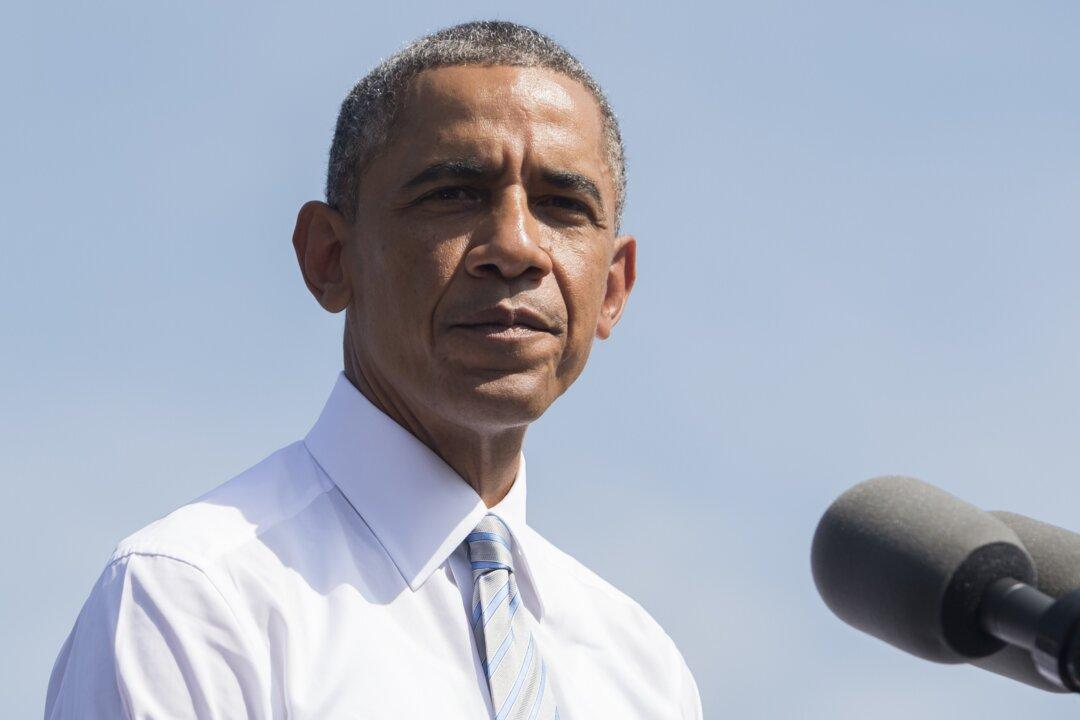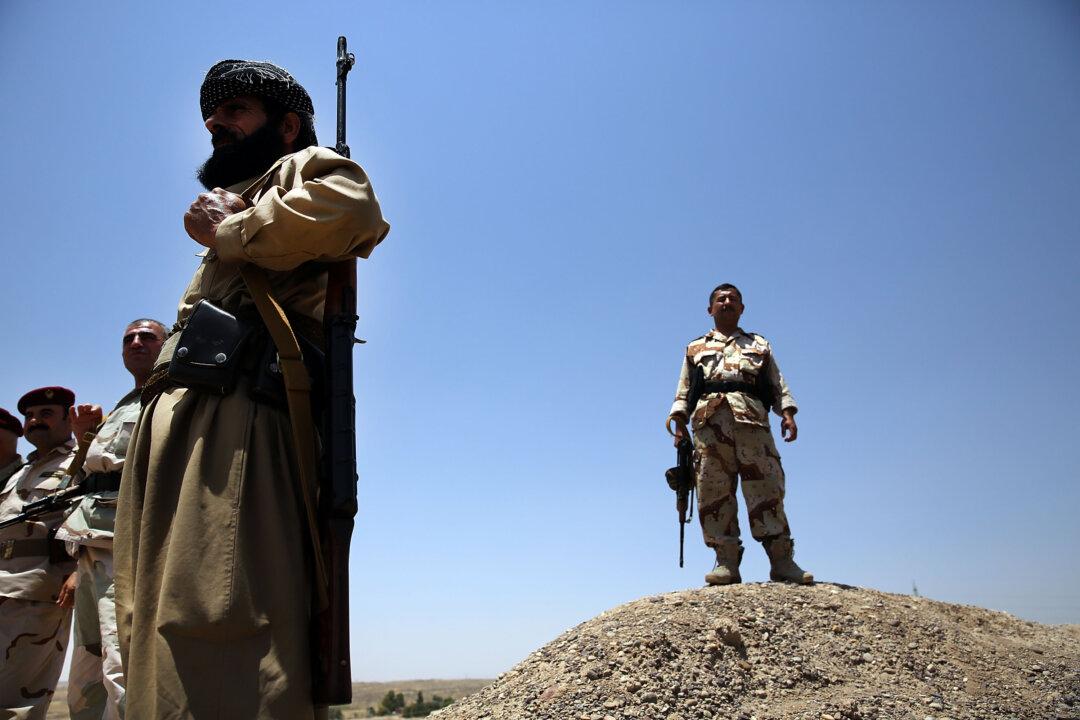Focus
Arab allies
Global Coalition Stepping Up Against Islamic State
Islamic State militants invaded Iraq’s west almost a year ago and overran the nation’s second-largest city in June, threatening death and torture to opponents in their way. But the world has been slow to respond, coming together Wednesday for the first high-level meeting of scores of nations now devoted to destroying the rampant insurgency.
|
US Gen. Martin Dempsey in Iraq to Assess Campaign
America’s top military leader arrived in Iraq on Saturday on a previously unannounced visit, his first since a U.S.-led coalition began launching airstrikes against the extremist Islamic State group.
|
Pentagon Says More Ground Troops Possible to Fight ISIS
The Pentagon warned Congress on Thursday that the long, drawn-out military campaign against Islamic State militants is just beginning and could expand to include modest numbers of U.S. forces fighting alongside Iraqi troops.
|
Coalition Airstrikes in Syria Have Killed at Least 860
US-led coalition airstrikes against the Islamic State group and other extremists in Syria have killed more than 860 people, including civilians, since they began in mid-September, a monitoring group said Wednesday.
|
Middle East Alignments: Open Questions
The Syrian crisis and, before it, the Arab uprisings in Tunisia, Libya, Egypt, Yemen, and Bahrain have exposed fault lines not only within the region, but between regional countries and the United States. An understanding of the fractures within the region has benefited from the extensive and largely astute analysis of a range of scholars, who point to sectarian splits along one axis and the divide between conservatives and radicals along another. The fault line between Washington and the regional capitals is harder to assess.
|
Iraqi Kurdish Lawmakers Authorized Its Peshmerga Fighters to Help Syrian Kurds
Lawmakers in Iraq’s largely autonomous Kurdish region Wednesday authorized peshmerga forces to go to neighboring Syria and help fellow Kurds combat Islamic State militants in the key border town of Kobani, providing much-needed boots on the ground.
|
Syrian Leader Exploits Coalition War Against ISIS
Syrian President Bashar Assad is taking advantage of the US-led coalition’s war against the Islamic State group to pursue a withering air and ground campaign against more mainstream rebels elsewhere in the country, trying to recapture areas considered more crucial to the survival of his government.
|
Islamic State Militants Seize US Airdropped Weapons Cache Meant for Kurds
Islamic State group fighters seized at least one cache of weapons airdropped by U.S.-led coalition forces that were meant to supply Kurdish militiamen battling the extremist group in a border town, activists said Tuesday.
|
US-Led Airstrike Kills 8 in ISIS-Held Syrian Town
A US-led coalition airstrike on a gas distribution facility in a stronghold of the Islamic State group set off a series of secondary explosions and killed at least eight people in eastern Syria, activists said Saturday.
|
Obama’s Legacy in the Middle East: Passing the Baton in 2017
In a period of about six weeks spanning August and September 2014, President Obama dramatically revamped his Middle East policy to put degrading and destroying the Islamic State (ISIS) at its center.
|
Hard-Pressed Between Turkey and ISIL, Kurds Essential to Regional Peace
The Kurds of Syria and Iraq have become a major focal point in the war against the Islamic State group, with Kurdish populations in both countries coming under significant threat by the militants’ lightening advance.
|
Kurds Hold Position Against ISIL Advance in Syria
Intensified U.S.-led airstrikes and a determined Kurdish military force on the ground appear to have had some success in halting advances by Islamic State fighters on a strategic Kurdish town near Syria’s border with Turkey — at least for now.
|
Pentagon Names Syria-Iraq Operation: ‘Inherent Resolve’
It may be less punchy than previous nicknames for U.S. conflicts in the Middle East—remember Operation Desert Storm and its thunderous attacks on Saddam Hussein’s occupation army—but the Pentagon has finally named its fight against Islamic State militants in Iraq and Syria: Operation Inherent Resolve.
|
Syrian Kurds Feel Abandoned as Kobani Battle Rages
Kneeling over his brother’s fresh grave, Ali Mehmud gathered clumps of dirt in his hands, raised them to his lips to kiss them, then softly placed them back on the small mound.
|
Obama, Allies Plot Anti-ISIS Strategy
President Barack Obama and military chiefs from more than 20 nations gathered Tuesday in a show of strength against Islamic State fighters in Iraq and Syria. But the alliance faced a fresh test as Turkey launched airstrikes against Kurdish rebels inside its borders, defying pleas from the U.S. to instead focus on the IS.
|
Worried Iraqi Capital Sees Militants Siege Take Shape
On the western edge of Iraq’s capital, Islamic State group militants battle government forces and exchange mortar fire, only adding to the sense of siege in Baghdad despite airstrikes by a U.S.-led coalition.
|
Airstrikes Not End Threat From Syrian Terror Cell
The barrage of U.S. cruise missiles last month aimed at a Syrian terroristcell killed just one or two key militants, according to American intelligence officials who say the group of veteran al-Qaeda fighters is still believed to be plotting attacks against U.S. and European targets.
|
Coalition Strikes ISIL Position Near Turkish Border
The U.S.-led coalition ramped up its aerial bombardment of Islamic State positions in the Syrian border town of Kobani on Thursday as the extremist group battled street by street with Kurdish forces and reportedly rushed in reinforcements from surrounding areas.
|
US-Led Airstrikes Produce Few Gains
After two months, the U.S.-led aerial campaign in Iraq has hardly dented the core of the Islamic State group’s territory. The extremist fighters have melted into urban areas when needed to elude the threat, and they have even succeeded in taking new territory from an Iraqi army that still buckles in the face of militants.
|
Defeating the Islamic State Militarily Is Only Half the Battle
In his speech on Sept. 10 President Obama characterized the Islamic State as a terrorist group. There were clear political benefits to using this label, not the least of which was to facilitate the formation of a broad-based military coalition against the organization.
|
Global Coalition Stepping Up Against Islamic State
Islamic State militants invaded Iraq’s west almost a year ago and overran the nation’s second-largest city in June, threatening death and torture to opponents in their way. But the world has been slow to respond, coming together Wednesday for the first high-level meeting of scores of nations now devoted to destroying the rampant insurgency.
|
US Gen. Martin Dempsey in Iraq to Assess Campaign
America’s top military leader arrived in Iraq on Saturday on a previously unannounced visit, his first since a U.S.-led coalition began launching airstrikes against the extremist Islamic State group.
|
Pentagon Says More Ground Troops Possible to Fight ISIS
The Pentagon warned Congress on Thursday that the long, drawn-out military campaign against Islamic State militants is just beginning and could expand to include modest numbers of U.S. forces fighting alongside Iraqi troops.
|
Coalition Airstrikes in Syria Have Killed at Least 860
US-led coalition airstrikes against the Islamic State group and other extremists in Syria have killed more than 860 people, including civilians, since they began in mid-September, a monitoring group said Wednesday.
|
Middle East Alignments: Open Questions
The Syrian crisis and, before it, the Arab uprisings in Tunisia, Libya, Egypt, Yemen, and Bahrain have exposed fault lines not only within the region, but between regional countries and the United States. An understanding of the fractures within the region has benefited from the extensive and largely astute analysis of a range of scholars, who point to sectarian splits along one axis and the divide between conservatives and radicals along another. The fault line between Washington and the regional capitals is harder to assess.
|
Iraqi Kurdish Lawmakers Authorized Its Peshmerga Fighters to Help Syrian Kurds
Lawmakers in Iraq’s largely autonomous Kurdish region Wednesday authorized peshmerga forces to go to neighboring Syria and help fellow Kurds combat Islamic State militants in the key border town of Kobani, providing much-needed boots on the ground.
|
Syrian Leader Exploits Coalition War Against ISIS
Syrian President Bashar Assad is taking advantage of the US-led coalition’s war against the Islamic State group to pursue a withering air and ground campaign against more mainstream rebels elsewhere in the country, trying to recapture areas considered more crucial to the survival of his government.
|
Islamic State Militants Seize US Airdropped Weapons Cache Meant for Kurds
Islamic State group fighters seized at least one cache of weapons airdropped by U.S.-led coalition forces that were meant to supply Kurdish militiamen battling the extremist group in a border town, activists said Tuesday.
|
US-Led Airstrike Kills 8 in ISIS-Held Syrian Town
A US-led coalition airstrike on a gas distribution facility in a stronghold of the Islamic State group set off a series of secondary explosions and killed at least eight people in eastern Syria, activists said Saturday.
|
Obama’s Legacy in the Middle East: Passing the Baton in 2017
In a period of about six weeks spanning August and September 2014, President Obama dramatically revamped his Middle East policy to put degrading and destroying the Islamic State (ISIS) at its center.
|
Hard-Pressed Between Turkey and ISIL, Kurds Essential to Regional Peace
The Kurds of Syria and Iraq have become a major focal point in the war against the Islamic State group, with Kurdish populations in both countries coming under significant threat by the militants’ lightening advance.
|
Kurds Hold Position Against ISIL Advance in Syria
Intensified U.S.-led airstrikes and a determined Kurdish military force on the ground appear to have had some success in halting advances by Islamic State fighters on a strategic Kurdish town near Syria’s border with Turkey — at least for now.
|
Pentagon Names Syria-Iraq Operation: ‘Inherent Resolve’
It may be less punchy than previous nicknames for U.S. conflicts in the Middle East—remember Operation Desert Storm and its thunderous attacks on Saddam Hussein’s occupation army—but the Pentagon has finally named its fight against Islamic State militants in Iraq and Syria: Operation Inherent Resolve.
|
Syrian Kurds Feel Abandoned as Kobani Battle Rages
Kneeling over his brother’s fresh grave, Ali Mehmud gathered clumps of dirt in his hands, raised them to his lips to kiss them, then softly placed them back on the small mound.
|
Obama, Allies Plot Anti-ISIS Strategy
President Barack Obama and military chiefs from more than 20 nations gathered Tuesday in a show of strength against Islamic State fighters in Iraq and Syria. But the alliance faced a fresh test as Turkey launched airstrikes against Kurdish rebels inside its borders, defying pleas from the U.S. to instead focus on the IS.
|
Worried Iraqi Capital Sees Militants Siege Take Shape
On the western edge of Iraq’s capital, Islamic State group militants battle government forces and exchange mortar fire, only adding to the sense of siege in Baghdad despite airstrikes by a U.S.-led coalition.
|
Airstrikes Not End Threat From Syrian Terror Cell
The barrage of U.S. cruise missiles last month aimed at a Syrian terroristcell killed just one or two key militants, according to American intelligence officials who say the group of veteran al-Qaeda fighters is still believed to be plotting attacks against U.S. and European targets.
|
Coalition Strikes ISIL Position Near Turkish Border
The U.S.-led coalition ramped up its aerial bombardment of Islamic State positions in the Syrian border town of Kobani on Thursday as the extremist group battled street by street with Kurdish forces and reportedly rushed in reinforcements from surrounding areas.
|
US-Led Airstrikes Produce Few Gains
After two months, the U.S.-led aerial campaign in Iraq has hardly dented the core of the Islamic State group’s territory. The extremist fighters have melted into urban areas when needed to elude the threat, and they have even succeeded in taking new territory from an Iraqi army that still buckles in the face of militants.
|
Defeating the Islamic State Militarily Is Only Half the Battle
In his speech on Sept. 10 President Obama characterized the Islamic State as a terrorist group. There were clear political benefits to using this label, not the least of which was to facilitate the formation of a broad-based military coalition against the organization.
|

